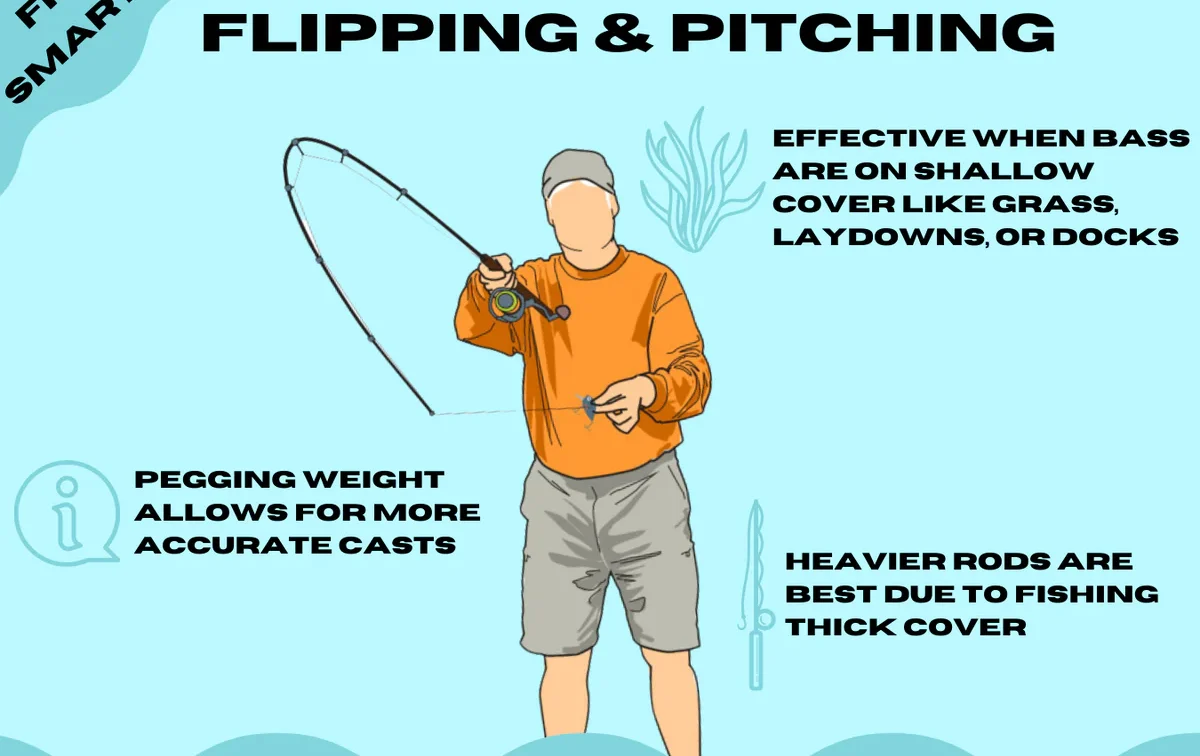Snakehead fishing has become increasingly popular among anglers due to the fish’s aggressive behavior and strong fight. Catching these formidable predators requires specific techniques tailored to their unique habits and habitats. This article will focus on key techniques for snakehead fishing, including topwater fishing, flipping and pitching, sight fishing, and ambush fishing.
Topwater Fishing
Topwater fishing is one of the most thrilling and effective techniques for targeting snakeheads, especially during the warmer months when they are most active near the surface.
- Lure Selection: Topwater lures like frogs, buzzbaits, and poppers are particularly effective because they mimic the natural prey of snakeheads, such as amphibians and small fish. Frogs are a top choice, especially weedless versions, as they can be cast into dense vegetation where snakeheads often lurk.
- Casting Strategy: Focus on casting your topwater lures near cover, such as lily pads, fallen trees, grass mats, or along the edges of dense vegetation. These are the places where snakeheads typically ambush their prey.

- Retrieval Technique: The key to successful topwater fishing is to use a stop-and-go retrieve. This technique involves short, sharp jerks of the rod to create splashes and movement on the surface, followed by pauses. Snakeheads are likely to strike during the pause, mistaking the lure for a wounded or unsuspecting prey.
- Timing: Early morning and late evening are the best times for topwater fishing. During these periods, snakeheads are more likely to venture into shallower waters to feed, making them more susceptible to surface lures.
Flipping and Pitching
Flipping and pitching are essential techniques for fishing in heavy cover, where snakeheads are often found. These methods allow you to present your bait precisely and quietly, reducing the chance of spooking the fish.
- Gear: Use heavy-duty rods and reels with braided line, which can handle the thick vegetation and the powerful fight of a snakehead. A medium-heavy to heavy rod with a fast action tip is ideal for these techniques.
- Lures: Jigs or weighted soft plastics, such as creature baits or swimbaits, are excellent choices for flipping and pitching. These lures can be rigged weedless, allowing them to penetrate dense cover without getting snagged.
- Technique: Flipping involves pulling a short length of line off the reel and swinging the bait underhand into cover, while pitching involves using a pendulum motion to cast the bait a short distance. In both techniques, it’s crucial to maintain a low profile and minimize splash when the bait enters the water.

- Presentation: Once the bait is in the water, let it sink to the bottom and then slowly lift it to mimic the movement of prey. Snakeheads are ambush predators, so a slow and steady retrieve with occasional pauses is effective in provoking a strike.
Sight Fishing
Sight fishing for snakeheads requires patience and a keen eye, as it involves spotting the fish in shallow, clear water before casting your lure.
- Location: This technique works best in clear, shallow waters where snakeheads can be seen near the surface or just below it. Look for areas with plenty of vegetation, such as weed beds, where snakeheads may be hunting or resting.
- Approach: Stealth is key in sight fishing. Move slowly and quietly to avoid spooking the fish. Polarized sunglasses can help reduce glare and improve your ability to spot snakeheads.

- Casting: Once you’ve spotted a snakehead, cast your lure a short distance beyond the fish and retrieve it slowly toward the target. Accurate casting is critical, as snakeheads are easily spooked and may not strike if the lure lands too close or with too much noise.
- Lure Selection: Soft plastics and weedless topwater lures are ideal for sight fishing. A slow, steady retrieve or a subtle twitching motion can entice a snakehead to strike.
Ambush Fishing
Ambush fishing capitalizes on the predatory nature of snakeheads by positioning yourself in areas where they are likely to be hunting.
- Location: Focus on narrow channels, creek mouths, or the edges of weed beds where snakeheads are likely to lie in wait for passing prey. These areas often serve as natural funnels that concentrate baitfish, making them prime spots for snakeheads.
- Technique: Position your boat or yourself strategically to cast into these high-probability zones. Use a slow, methodical retrieve, allowing your lure to stay in the strike zone as long as possible. This approach works well with both topwater lures and soft plastics.
- Timing: Ambush fishing is particularly effective during periods of low light, such as dawn and dusk, when snakeheads are more active. Overcast days can also provide ideal conditions for this technique.
Mastering these techniques can greatly increase your success in snakehead fishing. Whether you’re working topwater lures through thick vegetation, flipping jigs into heavy cover, sight fishing in clear water, or setting up in ambush zones, understanding the behavior and habitat of snakeheads is key to landing these fierce predators. By refining your skills and adapting your approach to the conditions, you’ll be well on your way to becoming a proficient snakehead angler

Robert Smith is the proud owner of Bait Barrels and Bows, a premier fishing sports store established in 1989. With over three decades of experience in the industry, Robert has honed his skills to become an expert angler, sharing his vast knowledge and passion for fishing with enthusiasts around the world. Through his store and writings, Robert provides invaluable tips and guidance, helping both novice and seasoned anglers improve their techniques and enjoy the sport to its fullest. His commitment to the fishing community is evident in his dedication to quality products and excellent customer service.

